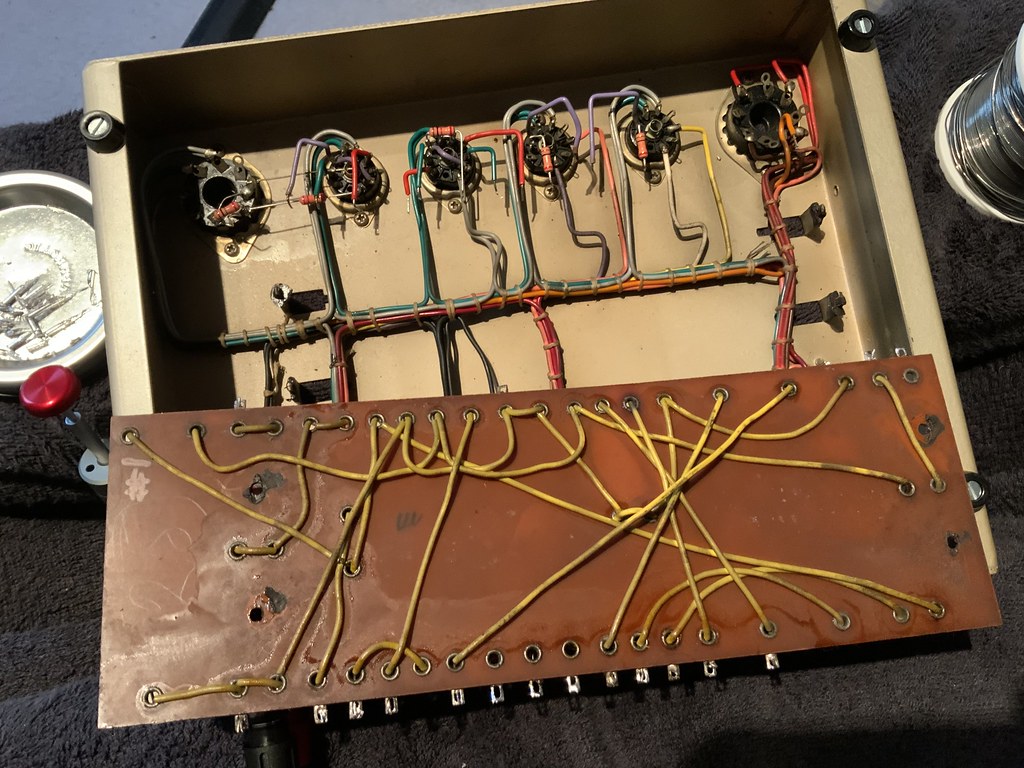Tony L
Administrator
I suspect it was just crust on the lower pins, I’ve just measured continuity from the top side (it’s actually 3 & 8) and I get the same resistance as the meter leads (0.1 Ohm). I have reflowed this whole socket in the past, but I didn’t completely desolder everything so some of the solder is pretty dull.
I’ll try the 8 Ohm tap along with the plug from the Stereo 20 later. The transformer sockets on this one are very clean as this is the amp that had a star washer rattling around in the output transformer for some reason (likely been there forever as none were missing from the amp). I gave the sockets a very good clean with Deoxit D5 when I had the side cowling removed. I also can’t get any effect from tapping, jiggling or partially unplugging the impedance plug when the amp is playing. Changing tap is definitely worth doing though.
PS I measured the 3M3 carbon resistors again and they are still bang on.
I’ll try the 8 Ohm tap along with the plug from the Stereo 20 later. The transformer sockets on this one are very clean as this is the amp that had a star washer rattling around in the output transformer for some reason (likely been there forever as none were missing from the amp). I gave the sockets a very good clean with Deoxit D5 when I had the side cowling removed. I also can’t get any effect from tapping, jiggling or partially unplugging the impedance plug when the amp is playing. Changing tap is definitely worth doing though.
PS I measured the 3M3 carbon resistors again and they are still bang on.



